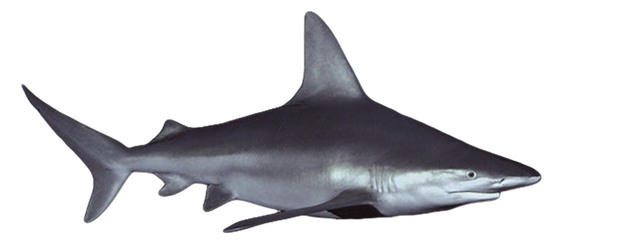Shark, Sandbar

View Regulations

Scientific Name
Carcharhinus plumbeus


Common Names
Sand shark, Brown shark, Queriman shark, Thickskin shark


Description
The Sandbar Shark is distinguished by its angular serrated teeth, rounded snout and larger first dorsal fin. Their coloration can range from greyish-blue to a sandy or bronze colored brown, with darker fin tips.


Habitat & Behaviour
Sandbar Sharks take their name from their preferred habitat. They can often be found on sandy bottoms in coastal shallows. Occasionally they can be found farther out towards intertidal zones.


Natural Prey
The Sandbar Shark is a bottom dwelling creature that prey’s upon targets of opportunity. Though a daytime feeder, the Sandbar Shark becomes most active at night devouring skates, rays, invertebrates and smaller fish.


Handling Tips
It goes without saying that you should steer well clear of any sharks mouth. They also have rough skin which if whipped on you can leave a rash. Little ones wiggle a quite a bit, grab behind gills and hold tail. Larger sharks tail snare if you can and keep in water. When releasing sharks try to leave as little line as possible. Hooks rot out in a few weeks. Pro Angler supports shark conservation and recommends you catch and release. If brought into the boat, leave for 15-20 minutes before handling, shark will tire and be easier to handle as their body is very strong as well. Known to even play dead before snapping at you, so be careful!

- Lucky Tackle Box
- Billfish Bounty in the Heart of the Mayan World – Guatemala
- The Best Species of Shark to Catch
- How to Catch a Shark: what equipment do you need?
- The Best Winter Fishing Spots in Texas





